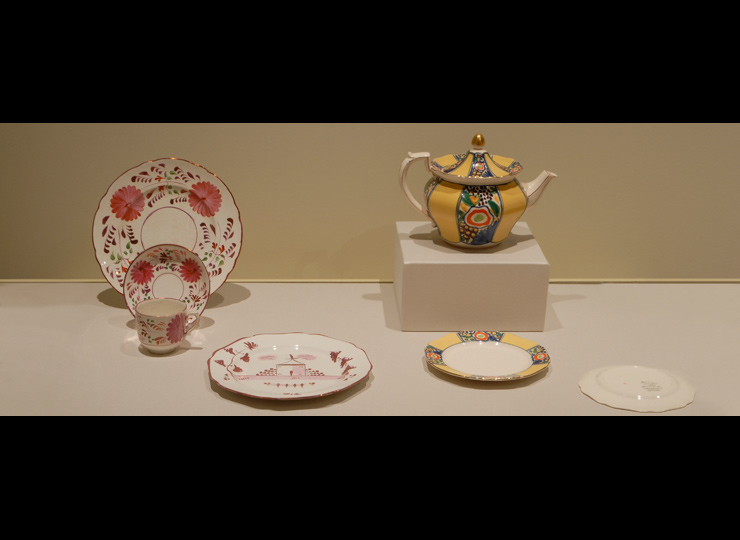Thorley became director of design at Charles Allerton’s pottery in 1924 or 1925. He realized that the factory had never stopped producing “Luster,” a type of metallic surface decoration popular throughout the nineteenth century but long out of style by the 1920s. The shiny surface of pink luster was created by adding tiny amounts of gold to the glaze, which was still being hand-applied by an elderly employee named Mrs. Woolley. She had learned the technique as a young woman in the 1840s from “Old Diana” who had learned the technique during her apprenticeship at Allerton’s parent company in the 1820s. Thorley recognized the aesthetic and commercial value of this unbroken tradition and he encouraged Mrs. Wooley to teach the application of luster to young employees. Before long Allerton lusterwares that harkened back to the originals were commercially available.
At the same time that Thorley was resurrecting time-honored lusterware traditions, he also was experimenting with new ideas. The unusual fruit decoration between the yellow panels of this teapot boasts the bright colors and abstracted patterns that became popular in the following years, most famously by neighboring ceramic decorator Clarice Cliff. His rising status among these innovators is emphasized by the name of his line: Thorley Ware.
